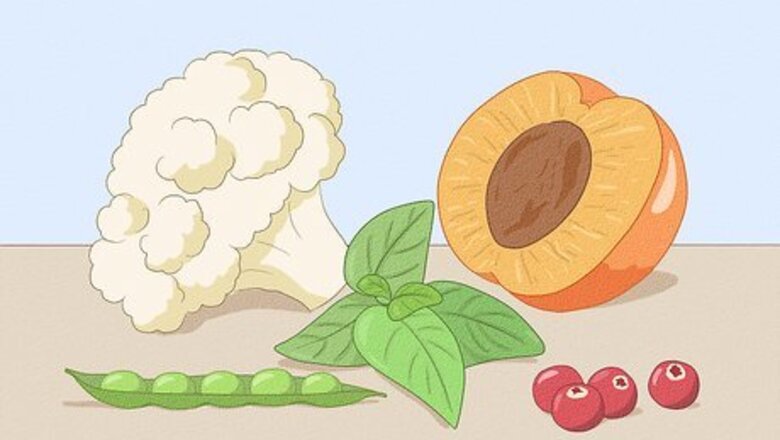
views
- Eat a healthy, balanced diet and include foods that are high in phytoestrogens like flax seeds, soy products, cranberries, and broccoli.
- Exercise regularly to maintain a healthy weight and always exercise in moderation. Too much exercise can negatively affect estrogen levels.
- Consider trying supplements like chasteberry, dong quai, black cohosh, and red clover, which have been linked to increased estrogen levels.
Food & Lifestyle Changes
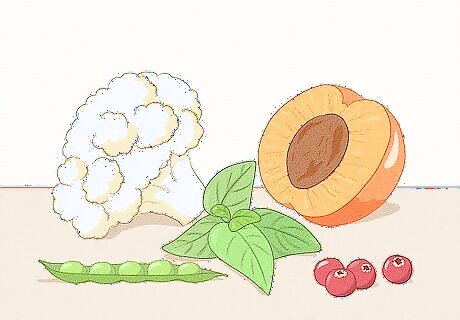
Choose foods that are high in phytoestrogens. Phytoestrogens act like an estrogen substitute in the body and occur naturally in several plants and herbs. Consider using phytoestrogens in moderation to alleviate symptoms of low estrogen levels, or menopause. Avoid phytoestrogens if you're trying to conceive; they've been linked to infertility and developmental problems. Foods and herbs that contain phytoestrogens include: Legumes: soybeans, peas, pinto and lima beans Fruits: cranberries, prunes, apricots Veggies: broccoli and cauliflower Herbs: oregano, sage, licorice Whole grains Black and green tea
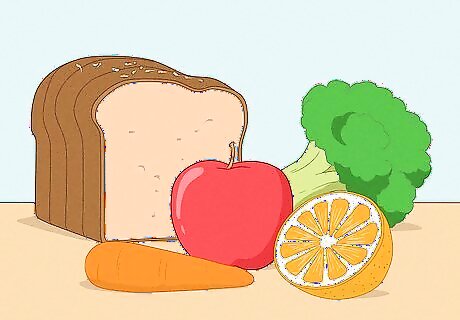
Maintain a healthy and balanced diet. Your endocrine system needs nutritious fuel in order to work properly and produce normal levels of estrogen. Eating a variety of healthy foods gives your endocrine system the best chance to naturally produce estrogen. Since sugar can lead to a hormone imbalance in the body, try to reduce your overall sugar intake. Switching from simple carbs to a lower-carb, whole-grain diet is a great place to start! For example, instead of white flour, opt for whole grain flour. Use whole grain pasta or brown rice.

Eat soy and drink soy milk. Soybean products, especially tofu, contain genistein, which is a plant product that mimics the effects of estrogen. In large quantities, these may be able to lessen menopausal symptoms, but soy may not make a significant difference in hormone levels. If you want to try incorporating soy products into your diet, you may try the following: Edamame Miso, in small amounts Soy nuts Tempeh Textured Soy Product (TSP), or foods made from textured soy flour
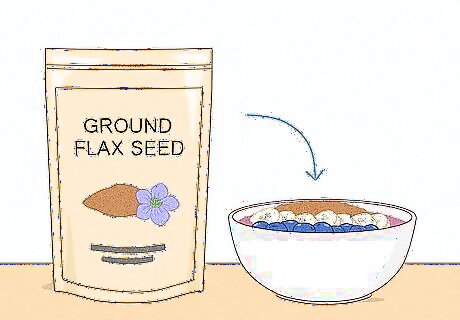
Incorporate flax seeds into your diet. Flax seeds have one of the highest concentrations of phytoestrogens, so try to find ways to work them into your daily meals. Adding flax seed to your breakfast cereal or in healthy smoothies is a good way to easily eat the seed. Flax seeds are also high in omega-3 fatty acids, which may reduce your risk of heart disease, cancer, stroke, and diabetes.

Drink more coffee. Women who drink more than 2 cups of coffee (200 mg of caffeine) per day may have higher estrogen levels than women who don't. While caffeine may increase estrogen levels, it does not seem to increase fertility. If you're trying to increase estrogen in order to ovulate, coffee and caffeine may not help much. The link between caffeine and estrogen is still unclear, but there's no harm in trying this. Avoid consuming more than 400mg of caffeine per day. Go with organic coffee to reduce your exposure to herbicides, pesticides, and fertilizers. Many white coffee filters contain bleach that can leach out into the final product, so try to find unbleached coffee filters for a safer brew.
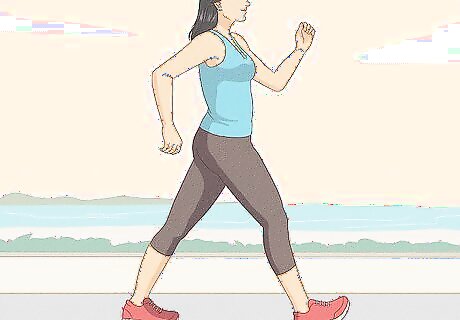
Exercise regularly and in moderation. Regular exercise is great for you and helps you maintain a healthy weight (which can boost estrogen), but too much exercise has been linked to a drop in estrogen levels. Avoid excessive exercising, but get regular exercise in! Women athletes may experience a drop in estrogen levels due to low levels of body fat. If you're an athlete or have low body fat levels, see your doctor for a good way to replenish your estrogen. Not only is moderate exercise healthy, it may also decrease the risk of breast cancer in women and increase overall longevity.
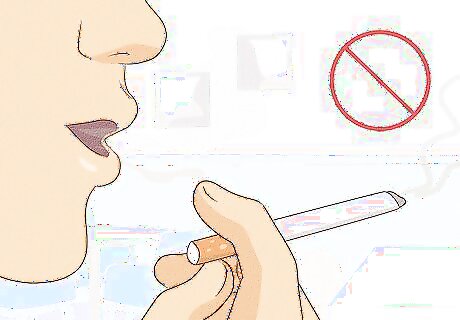
Quit smoking. Smoking may have negative effects on the endocrine system, limiting the body's ability to produce estrogen effectively. Smoking in pre-menopausal women has been linked with menstrual dysfunction, infertility, and earlier menopause.
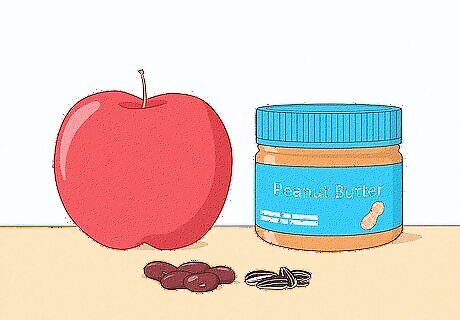
Consume vitamins and minerals that boost estrogen production and absorption. Snack on foods that are rich in boron, like legumes and fruit, as this nutrient helps hormones like estrogen function in your body. Load up on foods rich in vitamin E, too, like peanut butter, sunflower seeds, and red bell pepper. According to some research, vitamin E can help with some postmenopausal symptoms, like hot flashes. Some studies indicate that vitamin D can help increase estrogen production. Proteins like cod, tuna, salmon, and sardines are all great sources of this nutrient.
Natural Supplements
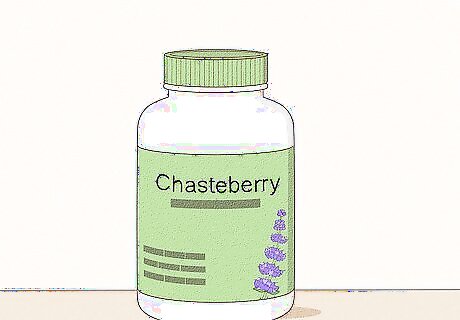
Chasteberry: Chasteberry supplements may help relieve symptoms of premenstrual syndrome, although scientific evidence is currently limited. However, it has not been proven to reduce menopausal symptoms, increase lactation, or increase fertility. Chasteberry has been shown to influence estrogen levels. However, the exact nature and level of the effect has not been widely established. Follow the package instructions for the specific dosage. Avoid chasteberry if you use: birth control pills, antipsychotic drugs, medications used to treat Parkinson's disease, or Metoclopramide (a dopamine-affecting drug).
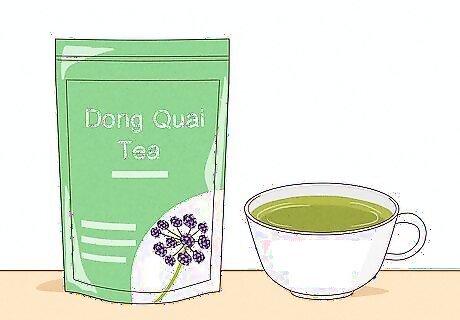
Dong quai: Dong quai has long been used in Chinese traditional medicine, and some report that it may reduce symptoms of premenstrual syndrome and menopausal symptoms. Studies on this are conflicted, but it is a safe supplement to take if you'd like to try it. Do not use it if you use blood-thinning drugs like warfarin.
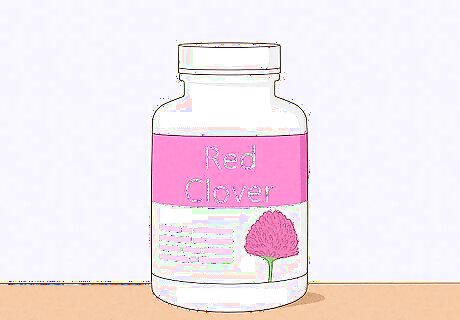
Red clover: Red clover supplements contain isoflavones, which may help reduce symptoms of menopause or premenstrual syndrome, such as hot flashes and night sweats. Studies are inconclusive, but it wouldn't hurt to try it out and see if it works for you.
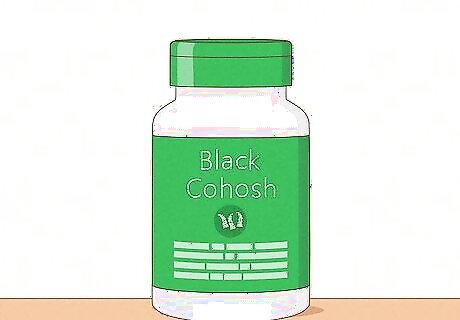
Black cohosh: Black cohosh supplements are used to treat menstrual cramps and pain, symptoms of menopause (like hot flashes), and premenstrual symptoms such as bloating, mood swings, and irritability. Studies on the viability of these benefits have been unclear, but the supplement is known to be fairly safe.
Medical Treatments
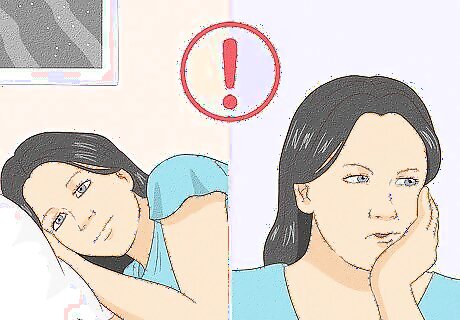
Watch for symptoms that indicate your hormone levels are imbalanced. Remember that hormonal changes are quite common, particularly in women going through menopause. However, if you are not within the normal age range for menopause or perimenopause or if your symptoms are intense, you may want to visit the doctor. Symptoms may include: Hot flashes or trouble sleeping Changes in mood or moodiness Changes in sexual function or decreased fertility Altered cholesterol levels
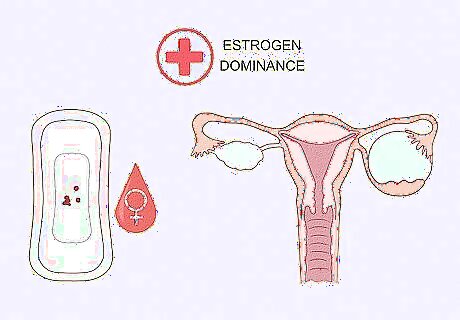
Discuss estrogen treatments with your doctor. Before you start an estrogen treatment program, ask your doctor about the effects of estrogen on your body. While estrogen insufficiency can result in problems, estrogen levels that are too high (or prolonged exposure at the wrong times) can lead to menstrual disturbances, ovarian cysts, and breast cancer. There are many conditions that can cause symptoms such as hot flashes, loss of libido, and other symptoms associated with low estrogen levels. Always consult your doctor before starting any treatment to increase your estrogen, including taking natural or herbal supplements.
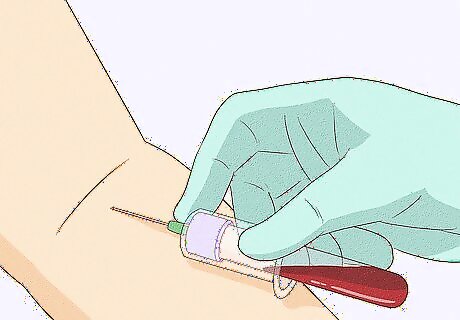
Ask your doctor to test your estrogen levels. There are a variety of tests available for determining hormone levels. Your doctor will likely have you take a blood test. Your blood may also be tested for FSH (Follicle-Stimulating Hormone), which is responsible for regulating estrogen and progesterone production in the ovaries. Tell your doctor about any medications and supplements you're taking, including hormonal contraceptive (which may affect your test results). Let your physician know about any existing medical conditions like thyroid disease, sex-dependent hormone tumors, ovarian cysts, and unusual vaginal bleeding. The FSH test is usually drawn on the second or third day of your period. There are 3 types of estrogen; estrone, estradiol, and estriol. Estradiol is the type of estrogen that is normally measured with testing, and a normal range is 30-400 pg/mL for premenopausal women (depending on where you are in your menstrual cycle) and 0-30 pg/mL for postmenopausal women. Levels lower than 20 pg/mL may cause hormonal symptoms such as hot flashes. The value of checking estrogen levels is controversial, as levels fluctuate widely throughout the day. However, it can be helpful in conjunction with a physical exam, history, and other testing.
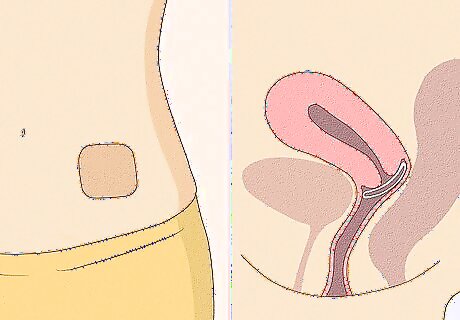
Try estrogen therapy if your doctor suggests it. There are a variety of estrogen therapies available, including pills, skin patches, and topical gels and creams. There are also vaginal estrogens available in the forms of tablets, rings, or creams that are inserted directly into the vagina. Talk to your doctor about the option that would be best for you.
















Comments
0 comment